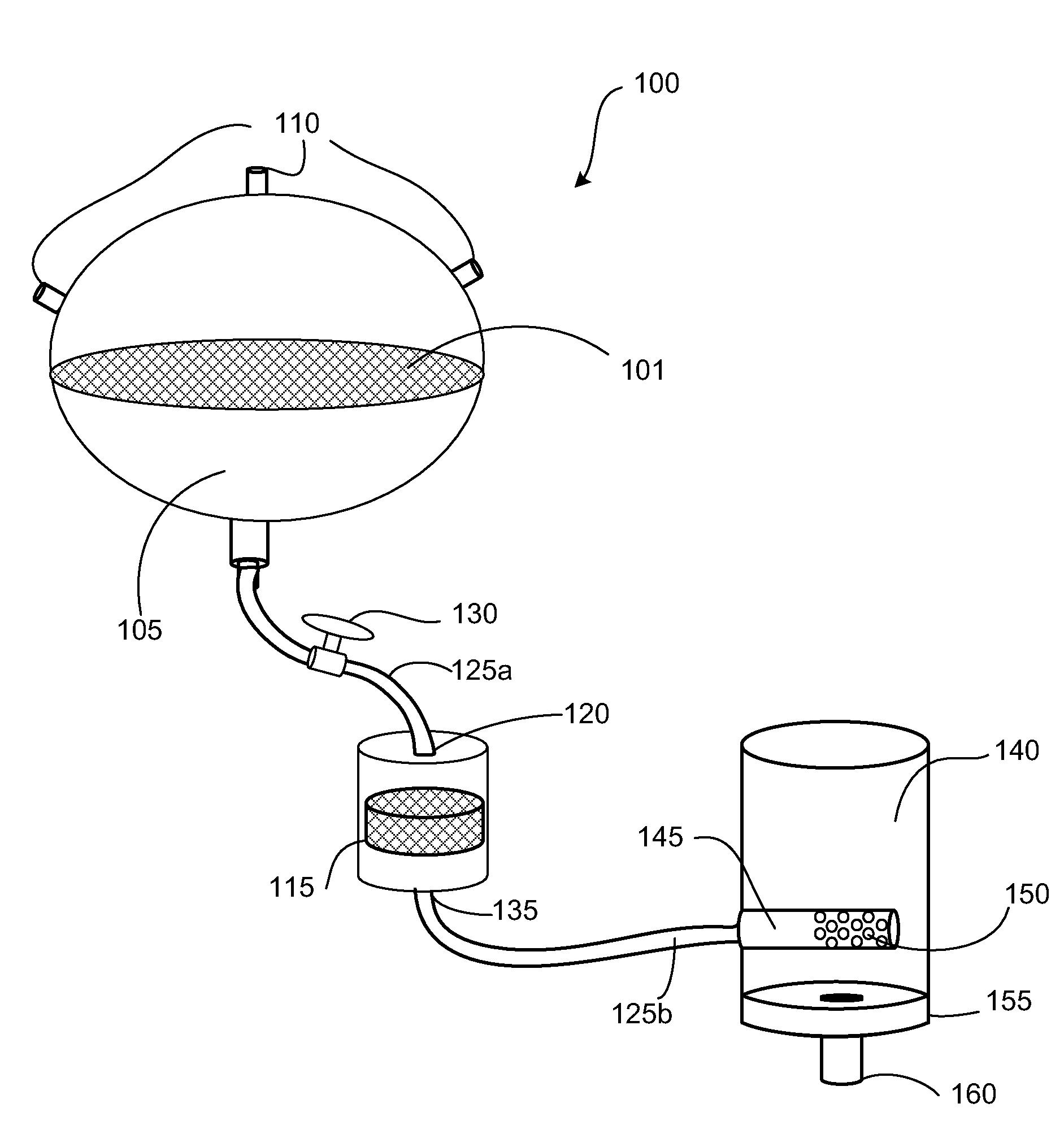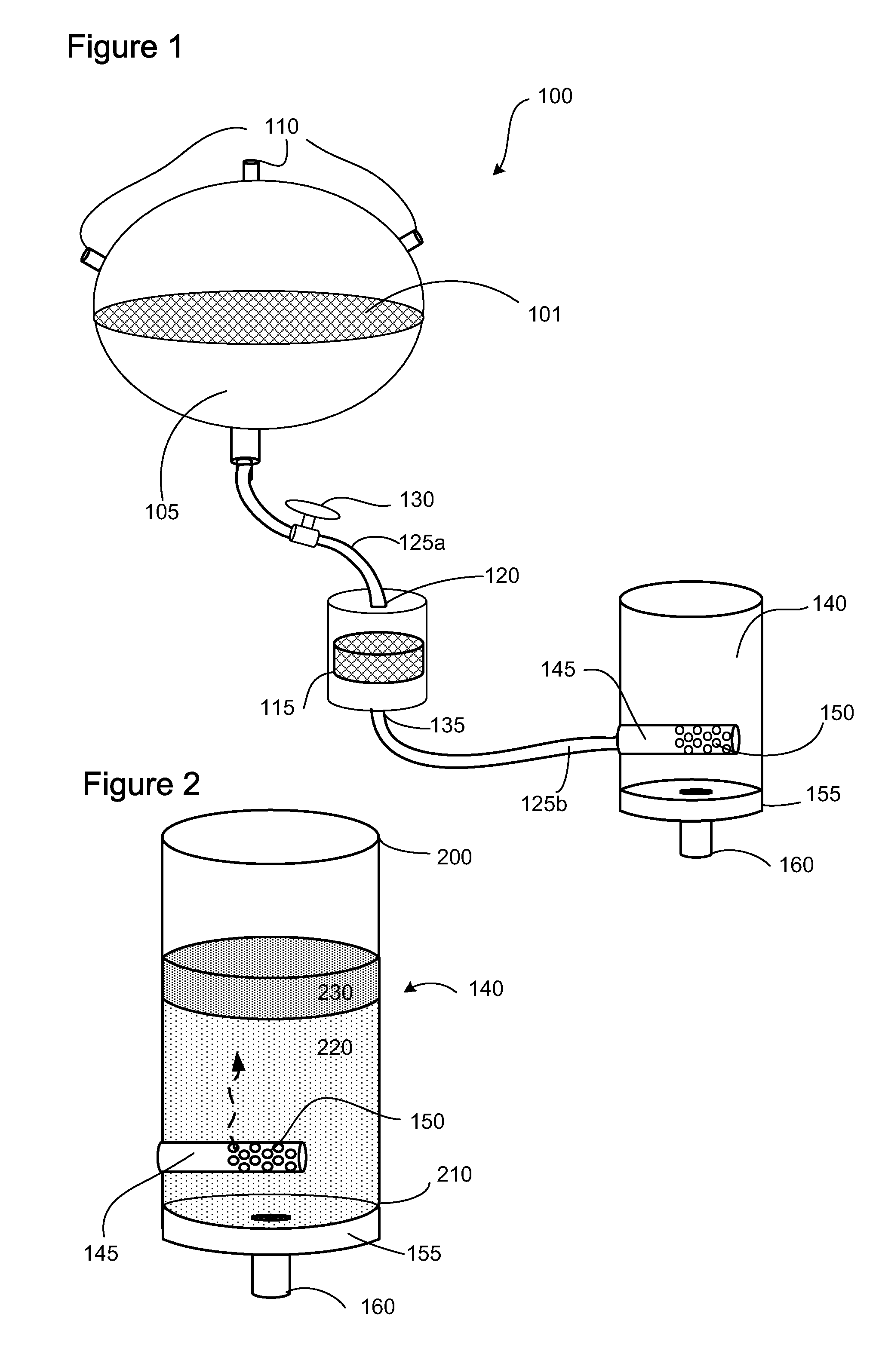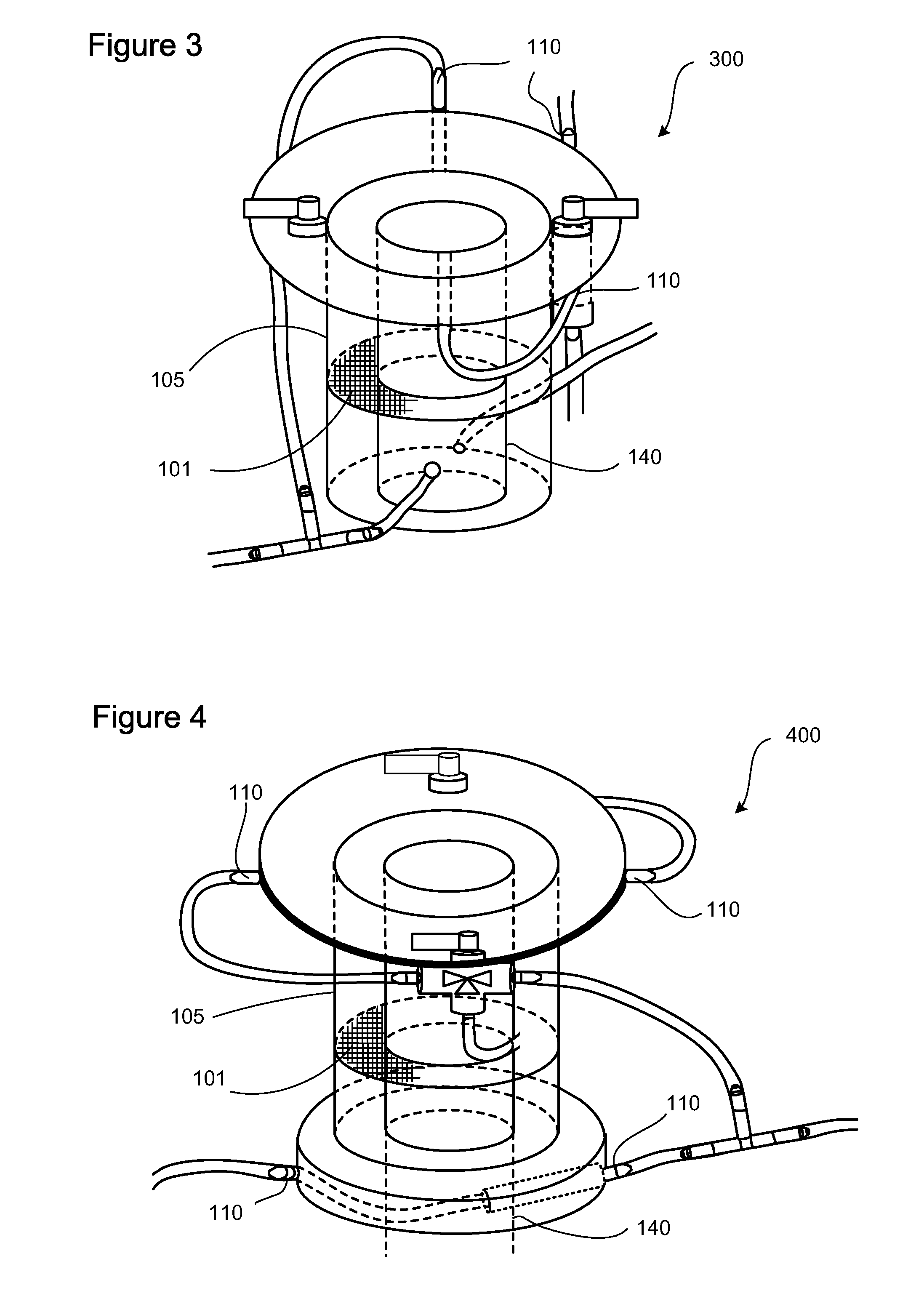Apparatus and Methods for Cell Isolation
a cell and apparatus technology, applied in the field of apparatus and methods for cell isolation, can solve the problems of unmet clinical needs, unsatisfactory clinical use of methods and apparatus for cell isolation in sufficient quantity and quality, and inability to obtain large amounts, so as to minimize the size of the lipid separation unit, minimize the size of the dispersing filter, and minimize the obstruction of the digestion mesh.
- Summary
- Abstract
- Description
- Claims
- Application Information
AI Technical Summary
Benefits of technology
Problems solved by technology
Method used
Image
Examples
example 1
Isolation of Reparative Cells from Adipose Tissue
[0053]FIG. 1 is a perspective view of one embodiment of an apparatus 100 having a digestion chamber 105 equipped with one or more ports 110 into which an adipose tissue sample may be introduced. Several procedural steps in purification and isolation of cell subpopulations may be carried out in this container. One of the many ports 110 may deliver washed and dissociated materials to a first filter 115 which may be removably connected to the port at the filter's first end 120 via tubing 125a equipped with a valve 130 or the like. The second end 135 of first filter 115 may be removably connected via tubing 125b to a fat or lipid separating chamber or unit 140. The fat separating chamber has a dispersing head 145 having a plurality of dispersing pores 150 through which a lipid / adipocyte-containing aqueous emulsion is well-dispersed to aid phase separation. Proximal to the bottom of the fat separating chamber 140 is an outlet end 160, whic...
example 2
Method of Isolation of a Reparative Cell Population from Adipose Tissue
[0070]The apparatus of the present invention can be operated by various methods and mechanisms. In one example, the operation of the apparatus can comprise four general steps: (1) introduction of adipose tissue into a digestion chamber; (2) treatment of the tissue in the digestion chamber to separate the constituent viable cells from the bulk tissue by agitation and recirculation through a digestion mesh or filter; (3) phase separation of the digestion mixture based on density in an aqueous solution; (4) collection of desired cell populations without centrifugation. In one embodiment of the invention, a further step is added of passing the digestion mixture through at least one filter prior to phase separation. In another embodiment, the digestion mixture is passed through a series of filters prior to phase separation. In one embodiment the final filter is configured as a dispersing head that separates clumped ce...
example 3
Further Apparatus Embodiments
[0080]FIG. 6 is a schematic depiction of one embodiment of the present invention. Apparatus 100 includes a digestion chamber 105 and a fat separation chamber (a.k.a. lipid separation unit) 140. Digestion chamber 105 generally refers to a housing that can receive and treat a biological sample and can have various shapes and structures. The depicted digestion chamber 105 includes at least two compartments, predigestion chamber 102 and post digestion chamber 103, separated by digestion mesh 101. The digestion chamber may optionally include a vent 116 that may include a filter 118 to preserve sterility such as, for example, an ACRODISC brand syringe filter (Pall Scientific).
[0081]In one embodiment of the invention, the cell isolation apparatus may include a dedicated port, such as for example a dip port, for removal of lipoaspirate or washed lipoaspirate from the predigestion chamber for use in autologous fat grafting. Alternatively, the lipoaspirate may be ...
PUM
| Property | Measurement | Unit |
|---|---|---|
| pore size | aaaaa | aaaaa |
| pore size | aaaaa | aaaaa |
| pore size | aaaaa | aaaaa |
Abstract
Description
Claims
Application Information
 Login to View More
Login to View More - R&D
- Intellectual Property
- Life Sciences
- Materials
- Tech Scout
- Unparalleled Data Quality
- Higher Quality Content
- 60% Fewer Hallucinations
Browse by: Latest US Patents, China's latest patents, Technical Efficacy Thesaurus, Application Domain, Technology Topic, Popular Technical Reports.
© 2025 PatSnap. All rights reserved.Legal|Privacy policy|Modern Slavery Act Transparency Statement|Sitemap|About US| Contact US: help@patsnap.com



